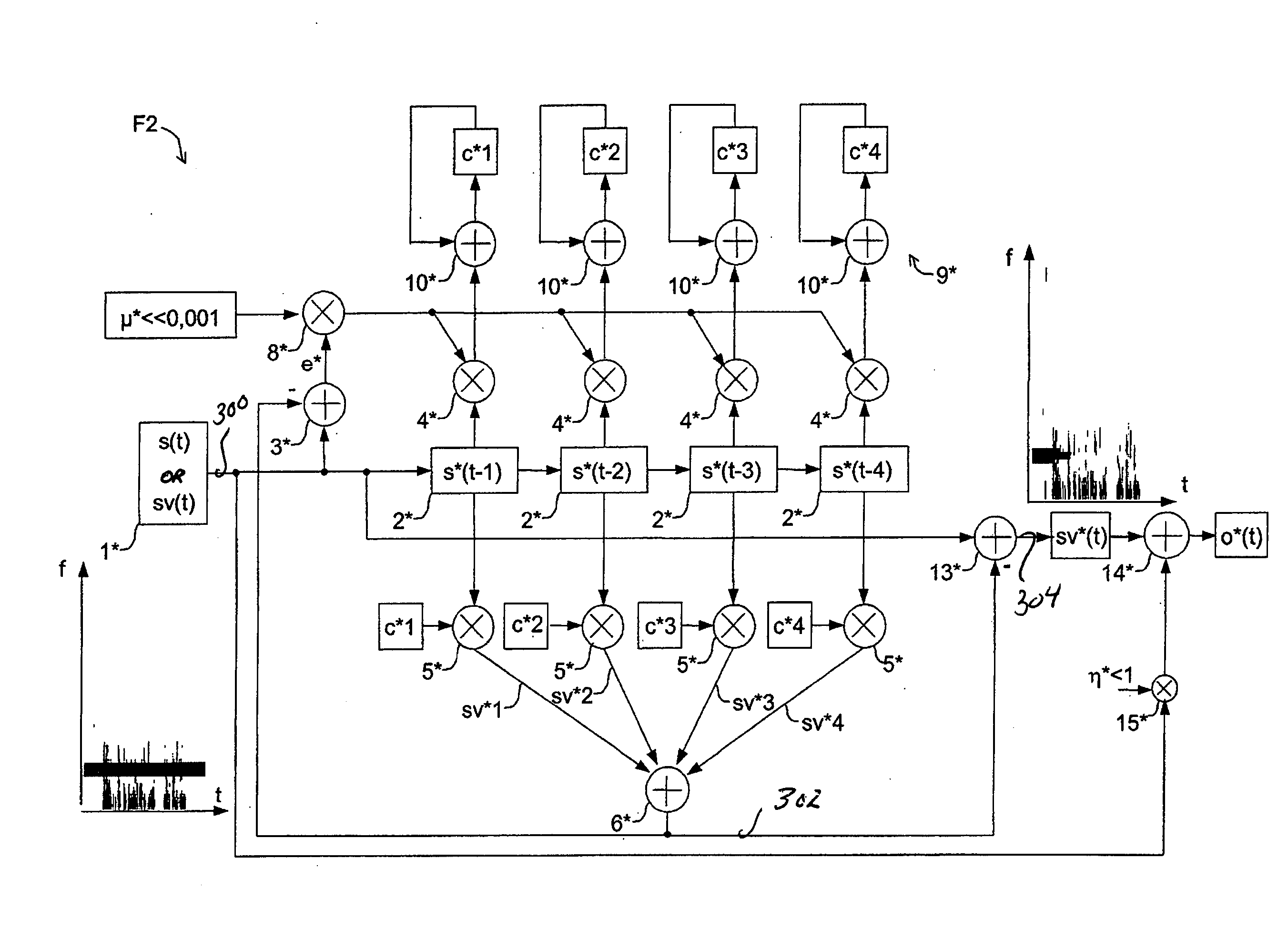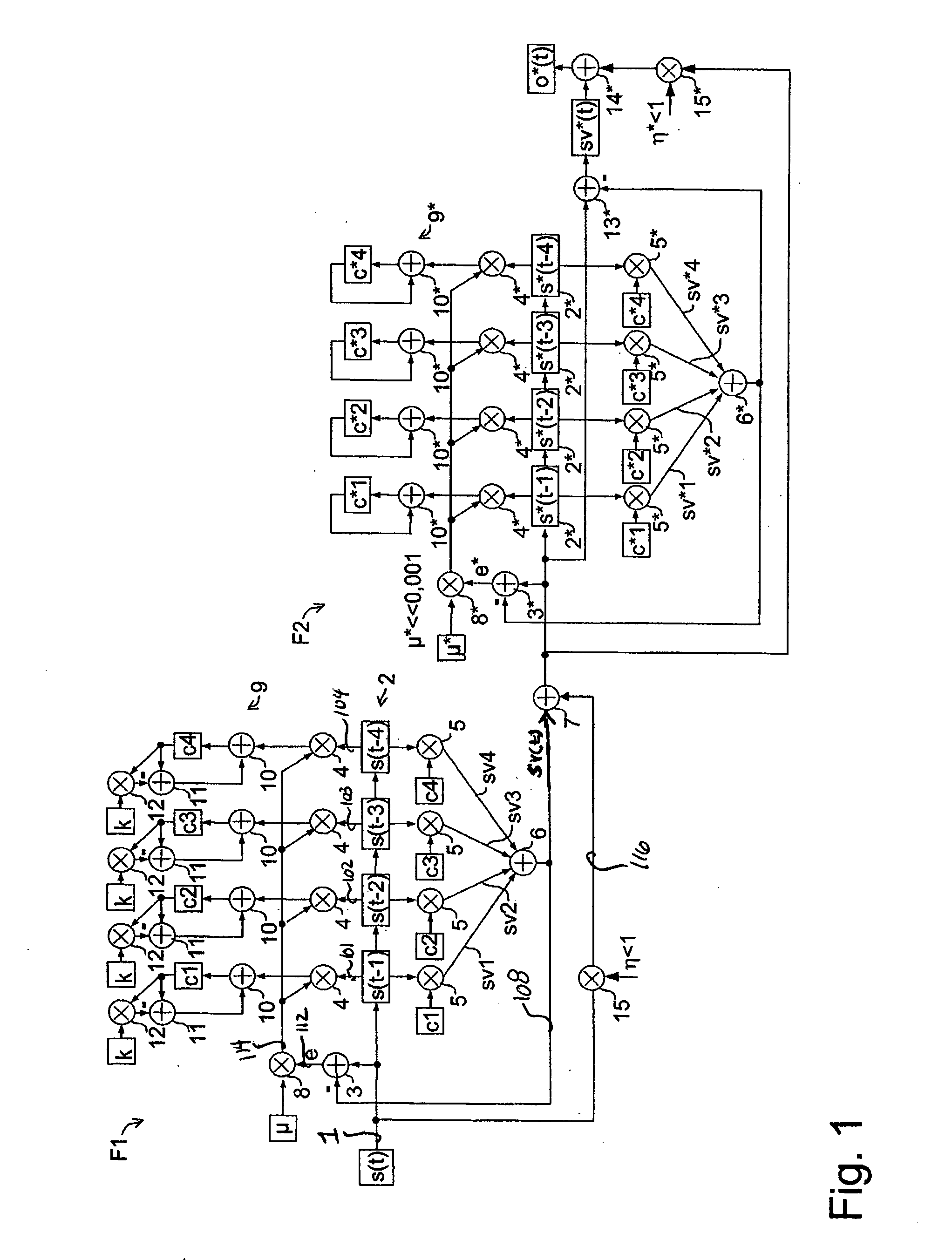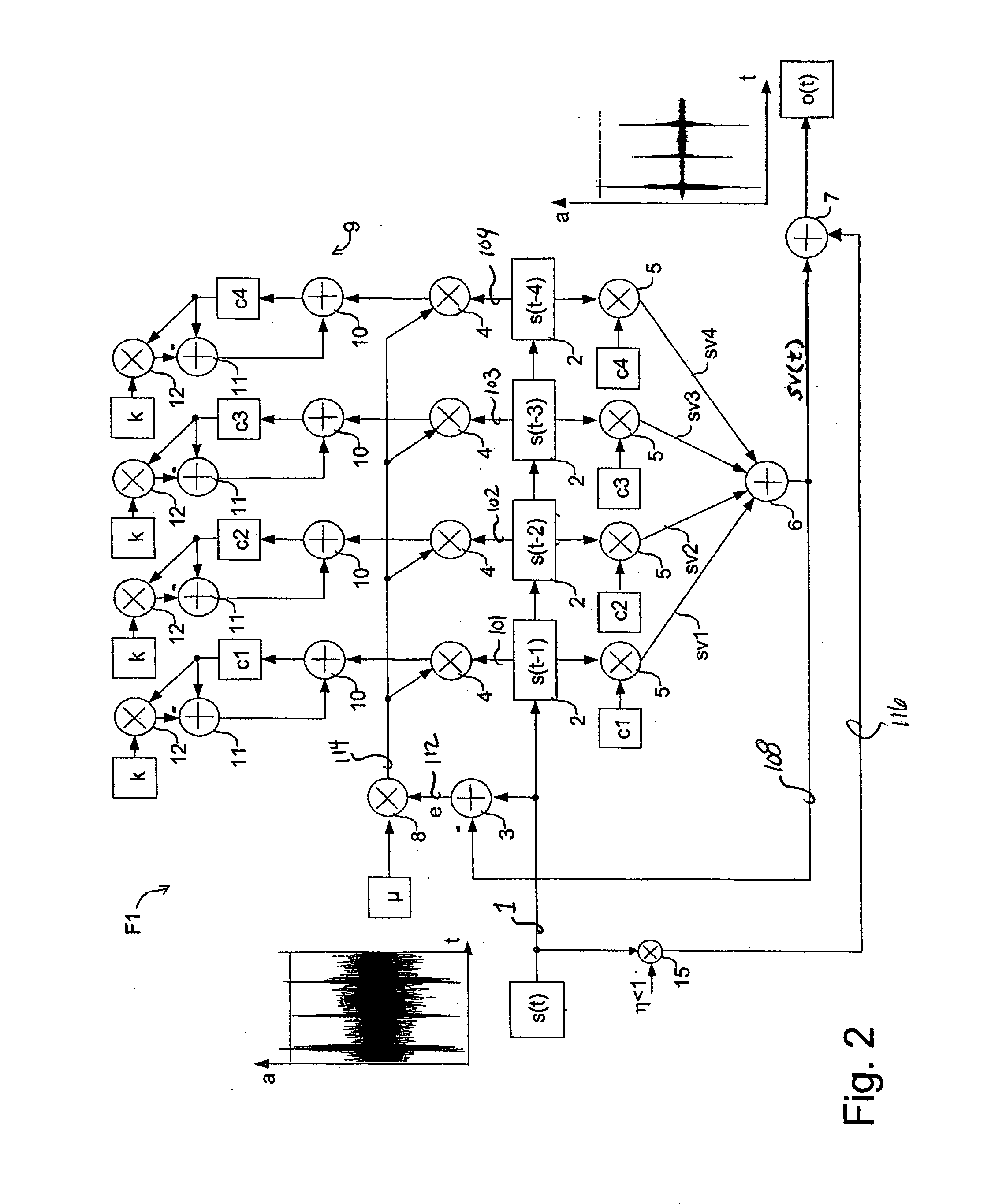Adaptive reduction of noise signals and background signals in a speech-processing system
- Summary
- Abstract
- Description
- Claims
- Application Information
AI Technical Summary
Benefits of technology
Problems solved by technology
Method used
Image
Examples
Embodiment Construction
[0036]FIG. 1 illustrates two adaptive filters F1, F2 which are serially connected as a first filter stage and a second filter stage. The first filter stage may be used on a stand-alone basis.
[0037] The first filter F1 receives an audio input signal s(t) on a line 1, and the audio input signal is applied to a group of delay elements 2. Each of the delay elements may be configured for example, as a buffer which delays the given applied value of the audio input signal s(t) by a given clock cycle. In addition, the audio input signal s(t) on the line is fed to a first adder 3. The delayed values s(t−1)-s(t−4) on lines 101-104 respectively are applied to a corresponding one of a first multiplier 4 and a corresponding one of a second multiplier 5. One coefficient each c1-c4 of an adaptive filter is also applied to the group of second multipliers 5. The resultant products output from the group of second multipliers 5 are outputted as prediction errors sv1-sv4 to a second adder 6. A tempora...
PUM
 Login to View More
Login to View More Abstract
Description
Claims
Application Information
 Login to View More
Login to View More - R&D
- Intellectual Property
- Life Sciences
- Materials
- Tech Scout
- Unparalleled Data Quality
- Higher Quality Content
- 60% Fewer Hallucinations
Browse by: Latest US Patents, China's latest patents, Technical Efficacy Thesaurus, Application Domain, Technology Topic, Popular Technical Reports.
© 2025 PatSnap. All rights reserved.Legal|Privacy policy|Modern Slavery Act Transparency Statement|Sitemap|About US| Contact US: help@patsnap.com



